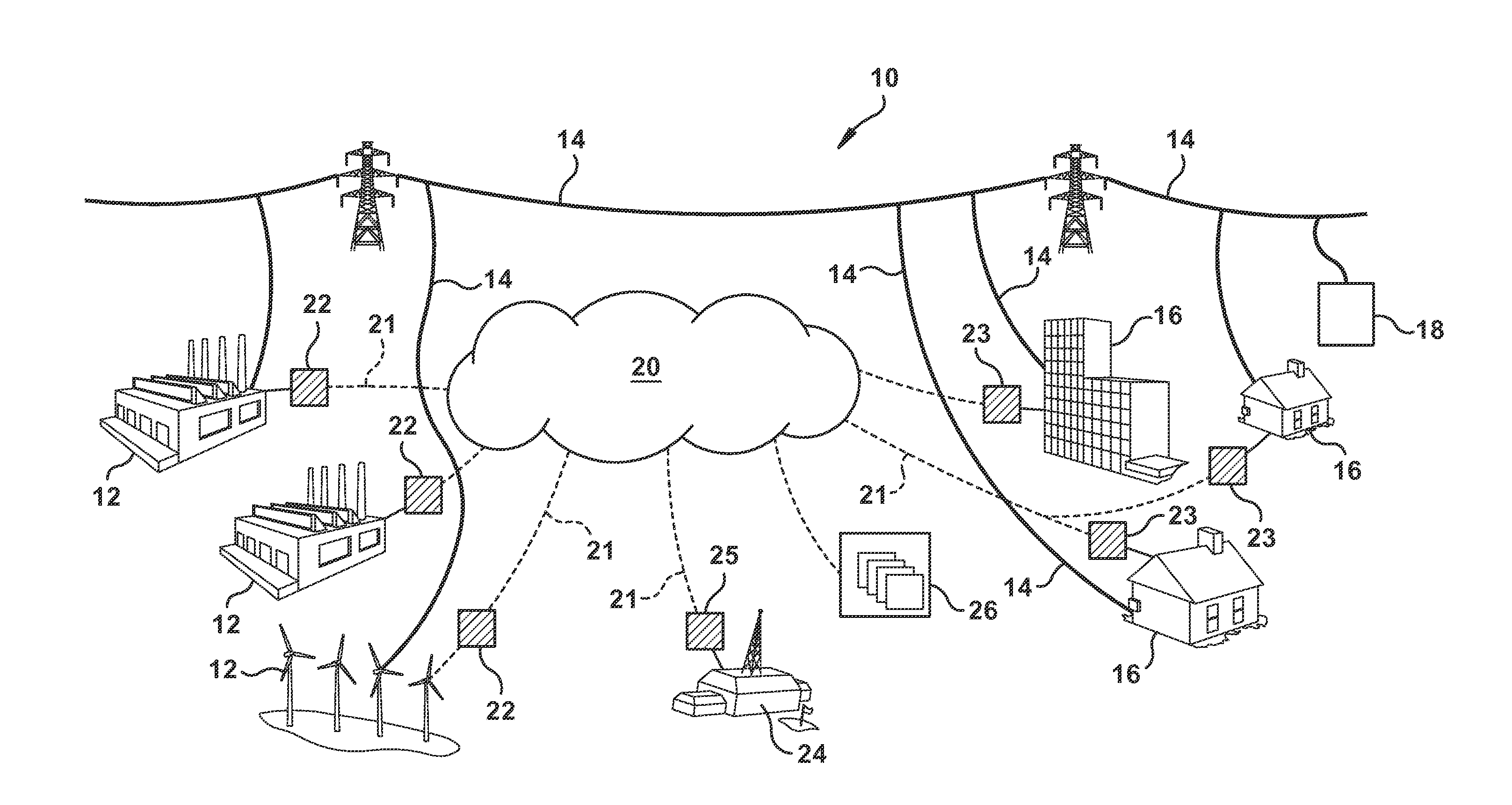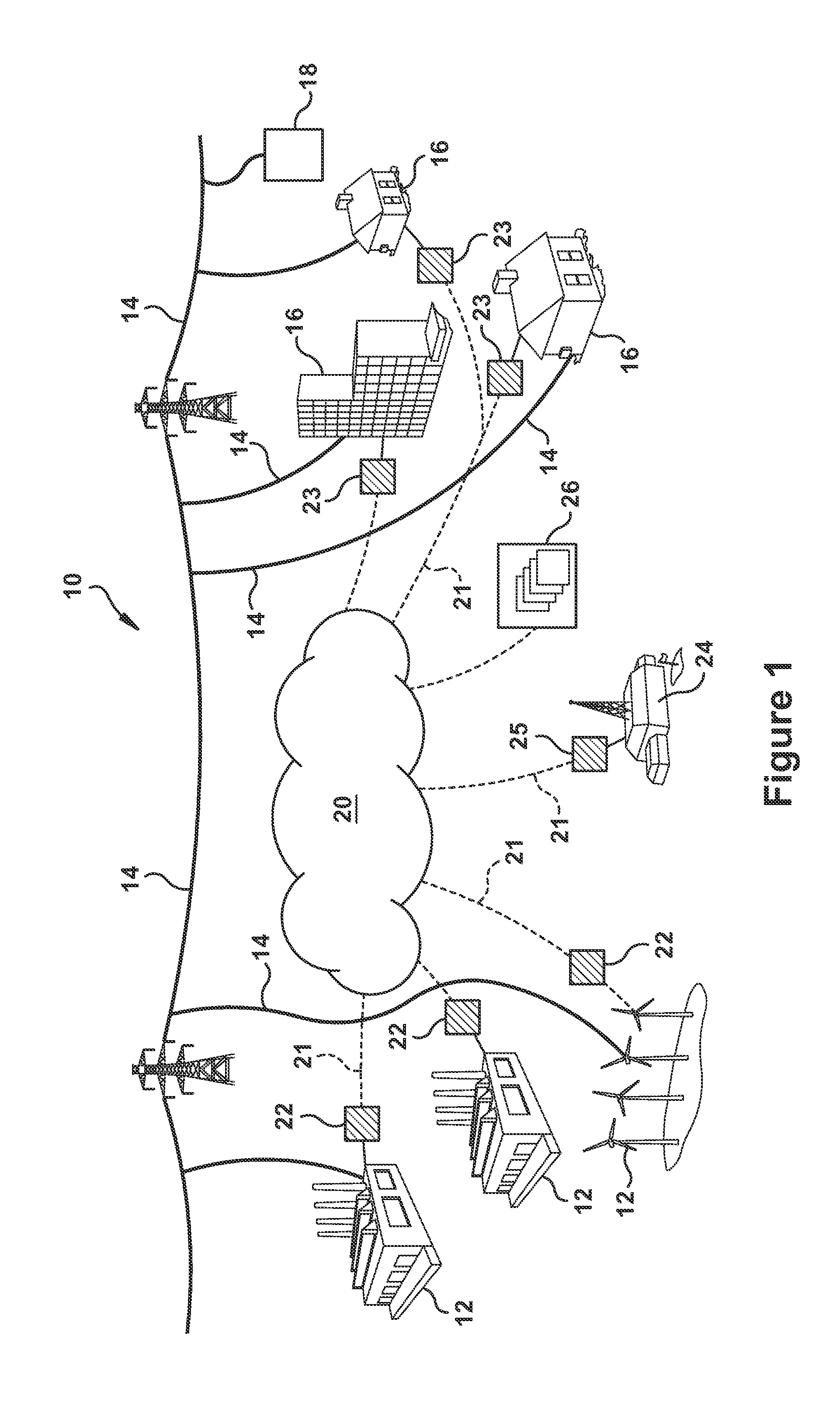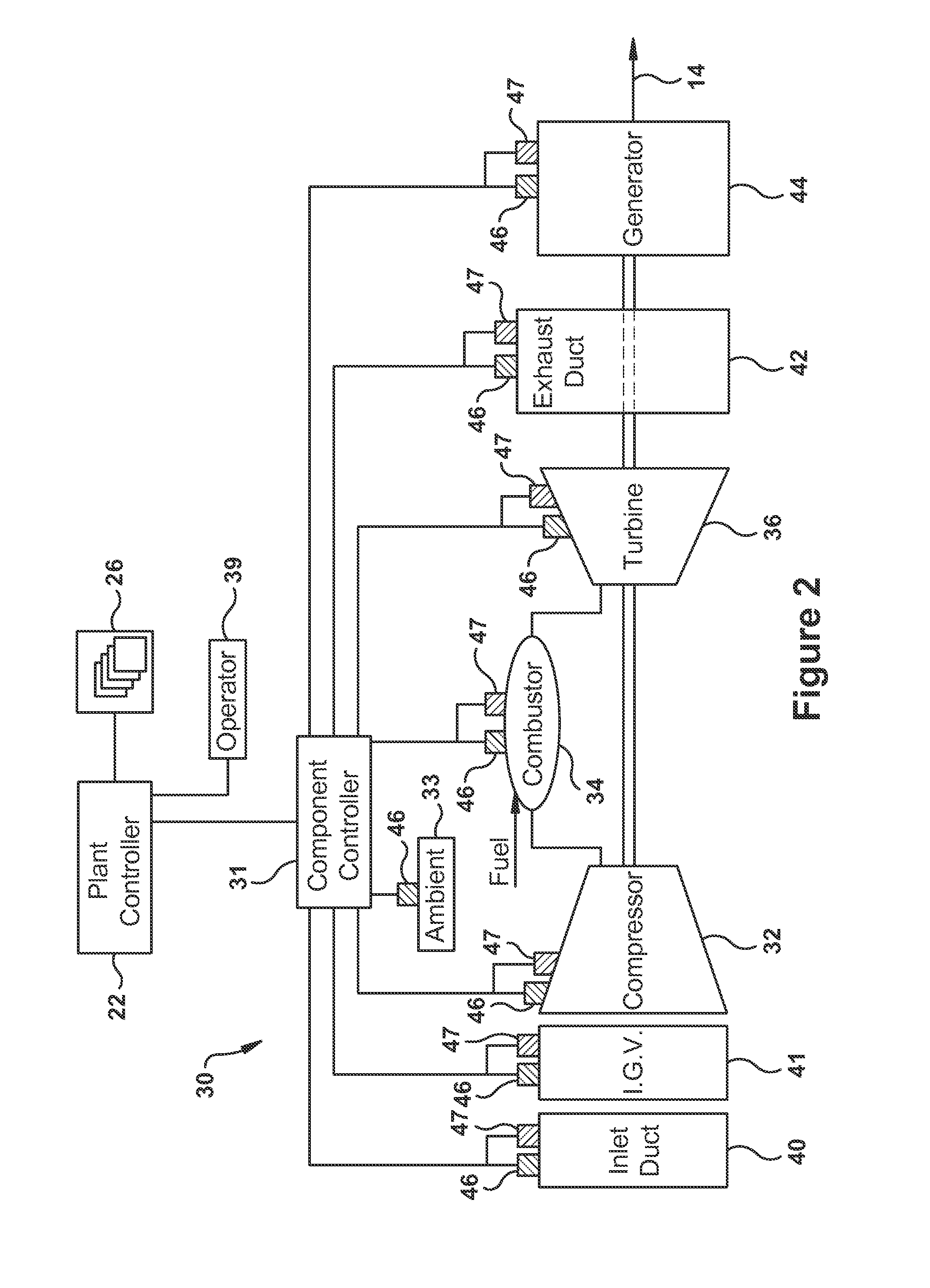Methods and systems for enhancing control of power plant generating units
a technology for enhancing control and power plant generating units, applied in adaptive control, process and machine control, instruments, etc., can solve the problems of affecting the actual output and efficiency of the power plant, increasing the cost of variable variables, and complex derivation methods
- Summary
- Abstract
- Description
- Claims
- Application Information
AI Technical Summary
Benefits of technology
Problems solved by technology
Method used
Image
Examples
Embodiment Construction
[0040]Example embodiments of the invention will be described more fully hereinafter with reference to the accompanying drawings, in which some, but not all embodiments are shown. Indeed, the invention may be embodied in many different forms and should not be construed as limited to the embodiments set forth herein; rather, these embodiments are provided so that this disclosure will satisfy applicable legal requirements. Like numbers may refer to like elements throughout.
[0041]According to aspects of the present invention, systems and methods are disclosed which may be used to optimize the performance of power systems, power plants, and / or thermal power generating units. In exemplary embodiments, this optimization includes an economic optimization by which an operator of a power plant decides between alternative modes of operation so to enhance profitability. Embodiments may be utilized within a particular power system so to provide a competitive edge in procuring advantageous econom...
PUM
 Login to View More
Login to View More Abstract
Description
Claims
Application Information
 Login to View More
Login to View More - R&D
- Intellectual Property
- Life Sciences
- Materials
- Tech Scout
- Unparalleled Data Quality
- Higher Quality Content
- 60% Fewer Hallucinations
Browse by: Latest US Patents, China's latest patents, Technical Efficacy Thesaurus, Application Domain, Technology Topic, Popular Technical Reports.
© 2025 PatSnap. All rights reserved.Legal|Privacy policy|Modern Slavery Act Transparency Statement|Sitemap|About US| Contact US: help@patsnap.com



